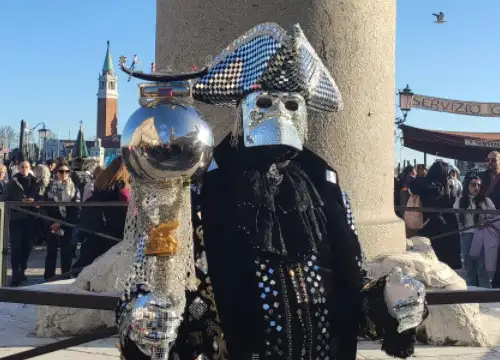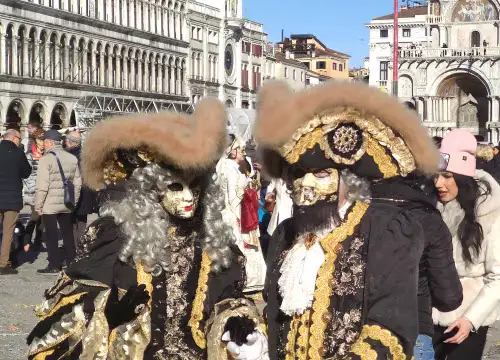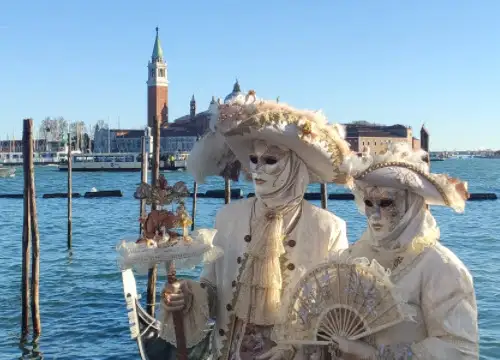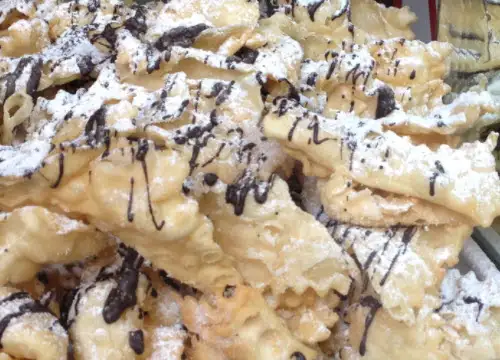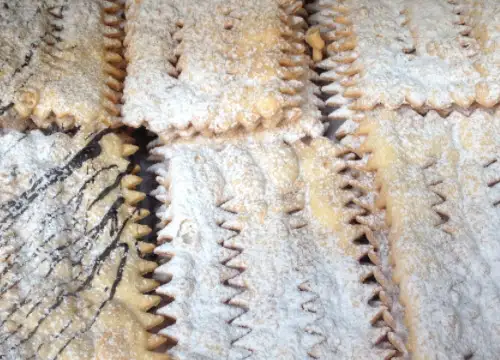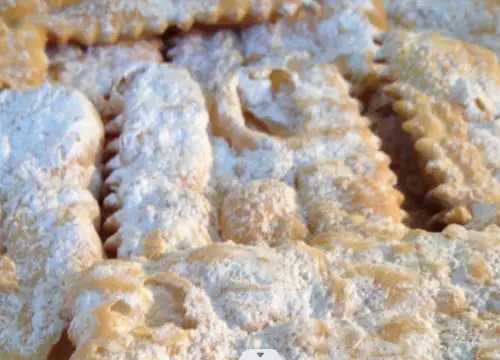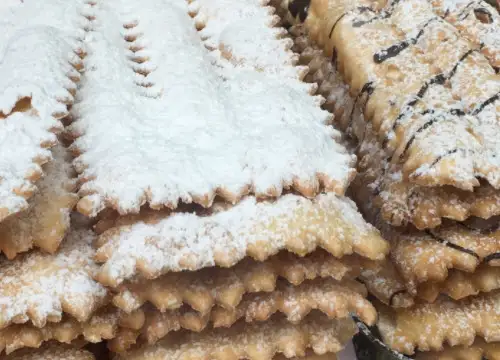Published:
Author: Antonio Maria Guerra
Venetian Galani
HISTORY, PLACES, INFO, INTERESTING FACTS

The history of the Venetian galani is closely linked to the lagoon city’s pastry tradition. In this article, we will explore the origins of these delicious strips of fried dough and how they gradually became one of the most popular gastronomic specialties during the colorful celebrations held every year in the Serenissima during Carnival. Enjoy reading!

The history of Venetian galani.
Galani, together with frittelle, are the dessert par excellence of the Venetian Carnival and have one of the oldest traditions. According to some scholars, their ancestors could be the ‘frictilia’: Roman delicacies cooked on the occasion of the ‘Saturnalia’ celebrations (*1). In support of this hypothesis, it is enough to remember that recipes similar to galani, but with different names, can be found in almost every region of Italy and even in some European countries, all of which happened to be under the rule of the Empire. The original recipe would therefore have evolved differently in different areas: in Venice, for example, the specialty is characterized by its very thin texture.
From this point of view, it’s interesting to note that just a few kilometres away from the lagoon, in the hinterland of the Italian Region of Veneto, the same preparation changes: the so-called ‘crostolo’ is in fact thicker, with serrated edges and generally with a central cut.
Notes:
*1: These were rich celebrations in honor of the god Saturn, held annually at a time that now corresponds to the end of December.
Let’s find out everything there is to know about Venetian galani, from preparation to variations, from calories to pairings … and much more, in the article we have dedicated to the sweet speciality.
Venice: the city of galani.
The city of Venice rose from the waters of the Venetian lagoon in the 5th century as a refuge from barbarian invasions. Over time, it became a powerful maritime republic and for many years was an important commercial crossroads between East and West. The millenary history of the ‘Serenissima’ is reflected in its architecture and culture: in this context, galani, the carnival specialty, embodies a culinary tradition as ancient as it is articulate.

The history of Venetian galani: the ‘frictilia’.
The so-called ‘frictilia’ are often considered to be the true ancestors of the Venetian galani. Together with ‘globulos’, they were a kind of dessert that could not be missed during the lavish celebrations of the Roman ‘Saturnalia’. Although not all sources agree, during the Empire this specialty consisted of small strips (*1) made from a simple flour-based dough (probably spelt), fried in pork fat, and flavored with honey.
Note
*1: According to some experts, they were round.

The history of Venetian galani: the origin of the name.
Although there is no certainty, it’s most likely that the name ‘galano’ (plural ‘galani’) derives from ‘galan’: a term belonging to the Venetian dialect that indicates the light and precious ribbons used in clothing and, in general, as decorations. The choice of this word would therefore be due to the look of the specialty, which in its most classic form, is quite similar to a small bow. Another, less reliable, theory is that the name refers to the ‘gallant’ and refined appearance of the delicacy.
There is no doubt that ‘frittelle’, together with galani, are a real must during the Venetian Carnival. Let’s find out more about them in this article.

Pasticceria Rizzardini: contacts.
Below are the contact details of Pasticceria Rizzardini, the oldest pastry shop in Venice, with which we collaborated for the writing of this article.
Contacts
Address: Sestiere San Polo 1415 Campiello dei Meloni – 30125 Venice (Italy)
Tel. : +39 041 522 3835
Copyright information.
The images displayed in this page belong to WebFoodCulture and Pasticceria Rizzardini.


